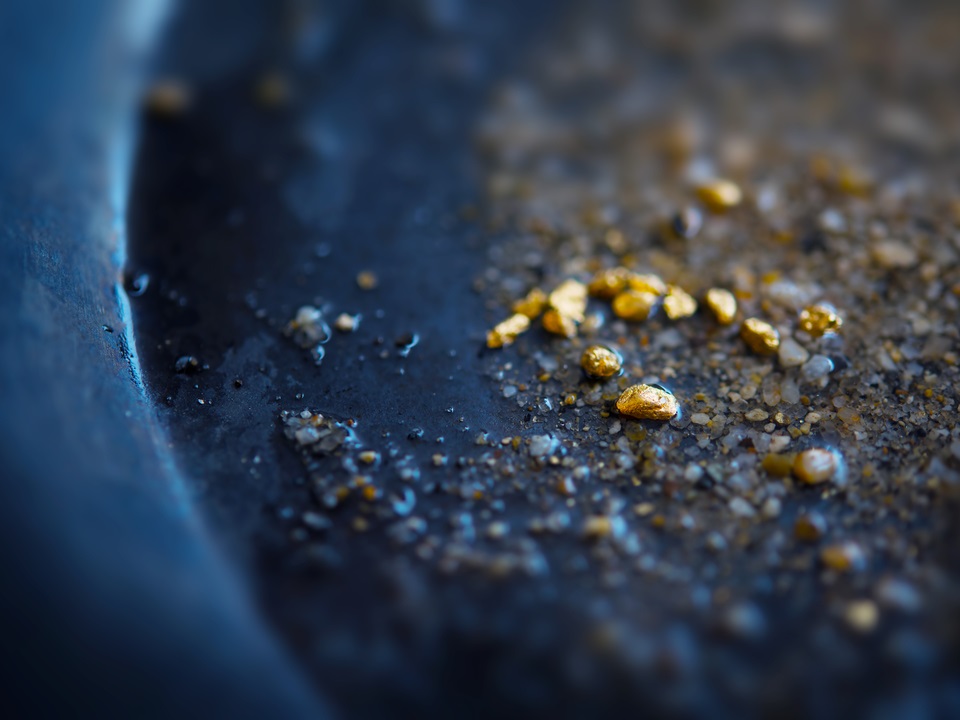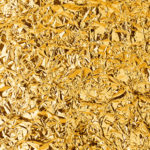More and more people every day are getting into beginner prospecting. Surprisingly, gold panning has a shallow barrier to entry, as all you need is a shovel and a gold pan. While some other equipment might help, it doesn’t take much just to get started.
This revolutionary yet historic tool is the first and last one used in gold prospecting. Gold panning allows you to locate gold deposits and check the value and quality of the gold you process.
Initially, people used cooking pans to search for gold, and the original gold pans were manufactured from metal, crafted by hand from wood, or even cow horns. Nowadays, gold pans are mass-produced, made from metal and plastic.
Although it may seem foreign, gold panning is a relatively straightforward process. In this guide, we’ll give you some tips on how to start gold panning and what to look for when you get started.
Getting to Know Gold Pans
Regardless of the level you’re prospecting at, every gold prospector has a gold pan in their gold prospecting kit. You can get cheap plastic ones online – which I prefer due to their rust and corrosion-proof design – or go for something with more weight, like metal. The lighter plastic design makes it easier to pan for longer periods, and if you get a black or green color, gold will stand out prominently among other rocks and metals.
Another factor to consider is the size in terms of the pan’s radius. 12 to 14-inch gold pans collect a decent amount of material, leading to more gold per dip. Going any smaller will yield slower results for the same amount of effort. Anything larger might become unwieldy, but that choice is up to you.
Lastly, some gold pans come with riffles, while some don’t. When gold panning, riffles – or tiny ridges built into the pan – help trap the gold and make it stand out among other particles.
How to Start Gold Panning

While gold panning is straightforward, it takes a little time to get the hang of it. However, like all things in life, the more you practice, the better and faster you will get. Follow our guide on gold panning and what to look for while doing it.
Choose the Right Location
Find a river, stream, or creek that has water deep enough for you to submerge your gold pan entirely. Likewise, it helps to use a water source with rapidly running water, as this washes away the muddy water you create when lifting the pan and sifting through its contents.
Find somewhere comfortable to sit, like on a log or rock in your water source. Half of the battle when gold panning is how long you can maintain the process. While it might not seem draining at first, the longer you pan, the more tired you will inevitably become.
Some great places to look include public lands under the jurisdiction of the US Department of Agriculture’s Forest Service or the US Department of Interior’s Bureau of Land Management. Make sure to contact any agency whose land you’re using beforehand to make sure gold panning is authorized.
You can use your smartphone to find modern gold-hunting tools that tell you where you can find gold, silver, platinum, and other valuable metals near you. Some apps provide real-time maps showing where people found gold recently and where you’d have a good chance for success. Check social media for gold panning and prospecting groups near you and get involved.
Start Collecting
When gold panning, fill your pan about two-thirds of the way full with dirt that you want to wash. Filling it up makes the process more cumbersome and slower overall, as it becomes harder to wash away mud without a bunch falling out.
Submerge the pan fully and use your fingers to mix the contents around. This removes floating and lighter material, allowing heavier objects – like gold – to sink to the bottom for collection.
Remove Large Material
You will undoubtedly collect large objects like rocks and debris. Look for what’s clearly visible and remove it from your pan. Before this, wash some of the dirt on the object back into the pan to avoid missing anything. Rinse and repeat until you remove all large objects.
Now comes the gold panning you see in popular media: begin to shake the pan back and forth. This allows the heavier materials to keep settling at the bottom of the pan. Practice until you find a rhythm, and don’t hesitate to shake a little vigorously to speed up the process as long as you don’t displace the material you want to wash.
Next, swirl the mud in a circular motion right beneath the water’s surface. This again separates lighter materials from heavier ones.
Remove Lighter Material

While rotating the pan, tilt it forward or backward to let sand and lighter rocks slide out of the pan. Make sure the riffles are at the side you’re pouring on so you can collect any gold that rises with the sand. Do this until you’ve removed a large portion of the lighter material, leaving mostly heavy, black sand.
Remove all but an inch of water in the center, covering what’s left inside. Gently swirl the pan. You might start to see gold – if so, take it out of the pan and put it where you’re collecting it.
Repeat this process.
Deal with Black Sand
Get the heavier rocks and flotsam to one side of the pan until the black sand is on one side of the pan. Shake it a few times.
Use the water to gently remove the top layer of sand. Repeat this process until you begin to see small gold flakes. Typically, you’ll have to swirl the top layer about three times.
Collect the Gold
Shake your pan to move the gold to the center. Remove top layers as you did in the step above until only gold is left. Collect all the gold you find and restart the entire process again.
Be Careful About Pyrite
A common mistake entry-level gold prospectors face when gold panning is collecting pyrite thinking it’s gold. Otherwise known as “fool’s gold,” this metal has a strikingly similar appearance to gold.
To test if the material is pyrite, test its malleability. Gold bends when struck with a hammer or heavy object while pyrite remains firm.
Gold tends to retain brightness even in the shade, so it will naturally stand out even among pyrite once you get your bearings. If you can place your hand under the shade and don’t see a luster, what you’ve collected is likely pyrite.
Some Other Tools and Techniques to Employ
Choosing a good area is half the battle. Study the mining records and geology in mining districts to get a better sense of where might be lucrative.
Some technology goes a long way too. Metal detectors can allow you to pinpoint areas in a water source where there might be precious metals. This modern technology and techniques provide numerous advantages over the trial-and-error nature of old gold panning.
After Gold Panning – Where to Sell Gold
Maybe you’ve become successful – struck gold, so to speak – in your gold panning endeavors. That’s great! The next step you should take is to find a reputable gold buyer.
You can find many gold buyers on the internet. However, the industry is full of scammers, so it’s best to use recommendations, online reviews, and references before committing to any sale.
Your gold’s value might not always match the going value of gold, as that value assumes 99.6% purity or higher.
Will You Get Rich?

While the process of gold panning is fun and interactive, getting rich will require some serious effort. In some regions, like the Western part of the US, it’s entirely possible to make a livable “wage” off gold panning. This doesn’t account for a variety of factors like time spent, areas panned, and the experience of the panner.
Unfortunately, many previously gold-rich locations were overmined or are still under the control of large companies on private land. Still, there’s plenty of gold out there. If you utilize the right tools and techniques, like the ones outlined in this article, you can stand to make a lot of money from gold panning.
Final Thoughts About Gold Panning
While the process sounds simple – and to some extent, that’s true – it takes practice and dedication to become an excellent gold panner. Gold panning doesn’t always yield fruitful results at first, and it may take you some time to start seeing the progress you’re genuinely proud of. But, when you master the art of gold panning, you’ll have an excellent, and lucrative, new hobby.
Are you looking for more information about gold and markets? Maybe you’re also interested in opening up a gold IRA? Contact Learn About Gold today or use our online “Find a Gold IRA Partner” tool for a free initial estimate. Get the power of gold in your hands.





